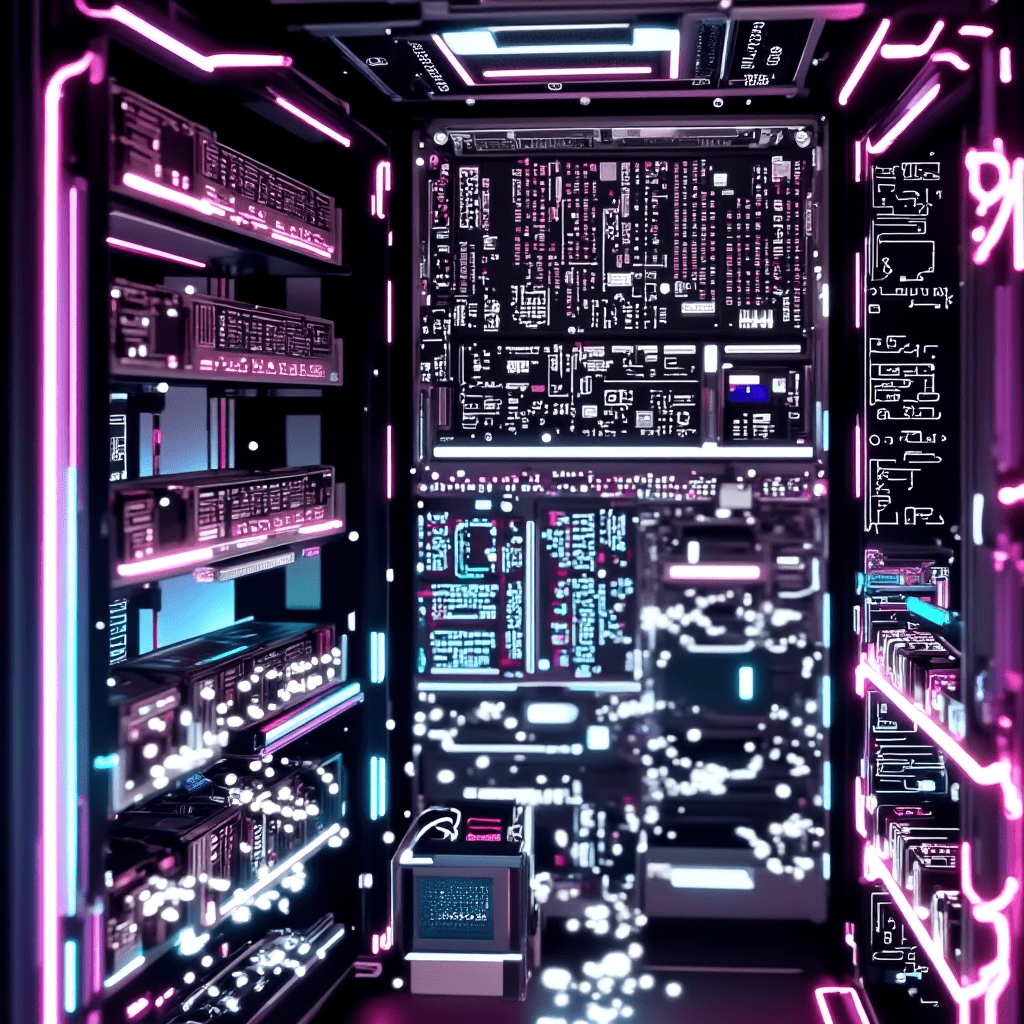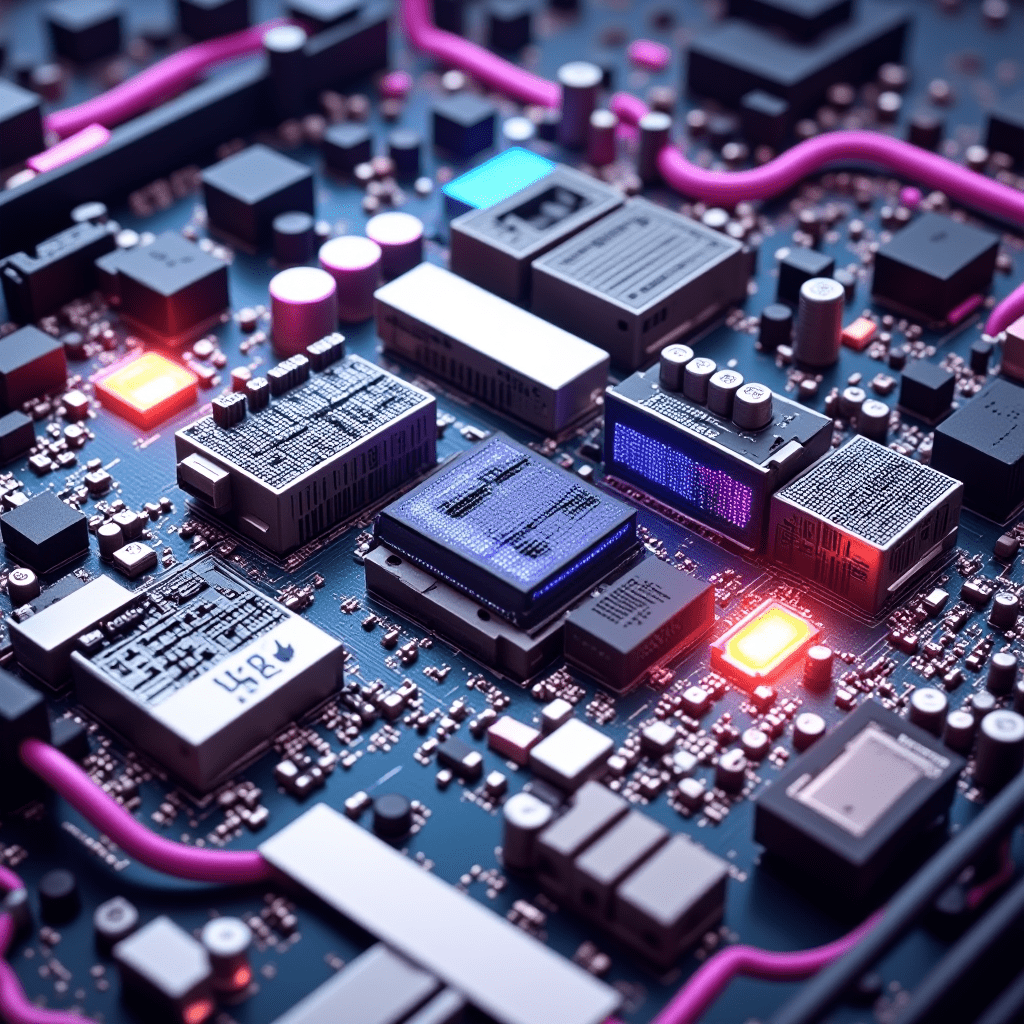
From Budget to Beast Building a $200K Deep Learning Cluster Optimized for LLMs 2
Designing the most powerful, scalable, and cost-efficient clustered AI system for a $200,000 budget requires a deliberate balance between raw GPU compute, network architecture, cooling, scalability, and LLM-specific optimizations (like memory bus width, NVLink, PCIe lanes, and software stack). Here’s a detailed system architecture designed for LLM training, fine-tuning, and inference with future expansion in mind.
🧠 Overview: Cluster Objective
- Primary Use: LLM training, fine-tuning (e.g., 7B–30B models), and inference workloads
- Targeted Features: Distributed compute (multi-node), GPU-accelerated deep learning, high-bandwidth interconnect, expandable infrastructure
- Core Focus: GPU density, thermal reliability, memory bandwidth, software ecosystem, and distributed workload orchestration
💸 Budget Breakdown (Approximate Total: $198,500)
| Component | Quantity | Price/Unit | Total |
|---|---|---|---|
| GPU Nodes (8x A6000-based) | 4 | $38,000 | $152,000 |
| Head/Storage Node | 1 | $7,500 | $7,500 |
| 100 Gbit Infiniband Switch | 1 | $12,000 | $12,000 |
| Cabling (QSFP+/power/ethernet) | — | — | $3,000 |
| Rack (42U) + PDUs + Cooling | 1 | $6,000 | $6,000 |
| Misc (spares, UPS, tax) | — | — | $8,000 |
| Total | $198,500 |
🧩 Cluster Architecture
🖥️ Compute Nodes (x4)
- CPU: AMD EPYC 7443P (24-core, PCIe 4.0, high memory bandwidth)
- GPU: 2x NVIDIA RTX A6000 (48GB GDDR6, 768 GB/s bandwidth, NVLink support)
- RAM: 256GB DDR4 ECC (8x32GB for quad-channel)
- Storage: 2TB NVMe Gen4 (system and local scratch), 4TB SATA SSD (local caching)
- Motherboard: Dual PCIe 4.0 x16 GPU lanes, full NVLink compatibility
- PSU: 1600W Platinum
- Chassis: 4U GPU server with optimized airflow (e.g., Supermicro, ASRock Rack)
- Cooling: Direct airflow ducting or active liquid cooling for GPU longevity
Performance: ~312 TFLOPS FP16 per node × 4 = 1.25 PFLOPS FP16 total
💾 Storage/Head Node
- CPU: AMD EPYC 7313P (16-core)
- RAM: 128GB ECC
- Storage: 48TB ZFS pool (8x 6TB SATA Enterprise drives) + 2TB NVMe ZIL + 1TB L2ARC SSD
- NIC: Dual 100GbE or Infiniband
- Purpose: Centralized shared storage (via NFS or BeeGFS), scheduler master (Slurm/Kube), and monitoring
🌐 Networking
- Switch: 100 Gbit Infiniband (e.g., Mellanox MQM8700 or similar)
- Cabling: QSFP+ DAC for short runs (<3m) or AOC for long runs
- Management Network: 1GbE secondary NICs on all nodes for IPMI + control
🧠 AI Software Stack
🧰 OS and Tools
- Ubuntu 22.04 LTS (optimized for GPU compute)
- CUDA Toolkit 12.x and cuDNN
- NVIDIA NCCL + nvPeerMem for inter-GPU comms
- Slurm or Kubernetes for workload orchestration
- BeeGFS or NFS + rsync for fast shared file access
- Docker + NVIDIA Container Toolkit for reproducible environments
- Optional: Apache Airflow for pipeline management
🧠 ML Frameworks
- PyTorch (optimized builds w/ ROCm and CUDA)
- HuggingFace Transformers and Accelerate
- DeepSpeed, FSDP, or Colossal-AI for LLM sharding
- Ray or Dask for distributed parallelism
- FastAPI + Triton Inference Server for API deployment
🔧 Optimization Strategies
⚙️ Hardware
- Enable XGMI or NVLink between A6000s in each node for >600 GB/s GPU-GPU
- Use NUMA-aware memory binding via
numactlandtaskset - Adjust PCIe topology and enable Resizable BAR
- BIOS: Disable C-states, enable SR-IOV for VM support if needed
🔌 Network
- RDMA enabled Infiniband for fast collective ops (e.g.,
torch.distributedusing NCCL backend) - Jumbo frames (MTU 9000), IRQ balancing, tuned NIC queues
🧮 Software
- Precompile Torch extensions, preload opcache
- Enable persistent worker pools (e.g., via
torchrunoraccelerate launch) - Use float16 or bfloat16 mixed-precision training
- Schedule large jobs via Slurm partitions for balanced heat and resource use
🪜 Scalability Path
- Add additional 4-GPU nodes modularly ($38k/node)
- Head node supports BeeGFS, CephFS, or NFS scale-out
- K8s or Slurm multi-cluster federation
- GPU telemetry (via DCGM + Prometheus) and automated scale-up/down
🧠 Bonus Features (If Budget Allows)
- Immersion cooling tank (~$3k per node) for dense deployments
- FPGA/NPU board for offloading tokenization or search ops
- Solar UPS Battery Pack (inverter-capable backup for research cluster)
🔧 1. GPU Nodes (x4) — Dual RTX A6000 Systems
- Purpose: Core compute units for LLM training and fine-tuning
- Specs:
- 2× NVIDIA RTX A6000 GPUs (48GB GDDR6 each, NVLink)
- AMD EPYC 7443P CPU (24-core, PCIe 4.0)
- 256GB DDR4 ECC RAM
- 2TB NVMe Gen4 SSD + 4TB SATA SSD
- 1600W PSU, 4U active airflow chassis
- Vendor: Lambda, Supermicro, or custom OEM build
- Model/SKU: Dual A6000 + EPYC 7443P build
- Unit Price: ~$38,000
- Total: $152,000 (4 units)
🧠 2. Head/Storage Node (x1)
- Purpose: Cluster control, shared storage (ZFS), orchestration (Slurm/K8s)
- Specs:
- AMD EPYC 7313P (16-core)
- 128GB ECC RAM
- 48TB ZFS pool (8×6TB Enterprise HDDs)
- 2TB NVMe ZIL + 1TB L2ARC SSD
- Dual 100 Gbit NICs
- Vendor: Supermicro or custom
- Model/SKU: ZFS + NVMe head node
- Price: ~$7,500
🌐 3. 100 Gbit Infiniband Switch
- Purpose: Ultra-fast inter-node communication with RDMA support
- Vendor: Nvidia/Mellanox
- Model/SKU: Mellanox MQM8700-HS2F (100 Gbit, 16–32 ports)
- Price: ~$12,000
🔌 4. High-Speed Cabling Kit
- Purpose: Infiniband QSFP+ cables, power cabling, 1GbE management cables
- Vendor: FS.com DAC, Amazon, Newegg
- Includes:
- 8× QSFP+ DAC/AOC
- Power cables (20A PDUs)
- 1GbE patch cables
- Price: ~$3,000
🗄️ 5. Server Rack + Power + Cooling
- Purpose: Infrastructure housing and thermal management
- Specs:
- 42U 4-post rack (fully enclosed)
- 2× APC/Tripp Lite PDUs
- 6-Fan ceiling-mounted or front-blade airflow system
- Vendor: StarTech, APC, Tripp Lite
- Price: ~$6,000
🛠️ 6. Miscellaneous (Spares, UPS, Tools, Buffer)
- Purpose:
- 1x 3kVA APC Smart UPS
- Spare NVMe SSDs, SATA disks
- Redundant fans, maintenance tools
- Budget buffer for tax/shipping/slippage
- Vendor: APC Smart-UPS, Newegg, local suppliers
- Price: ~$8,000
✅ Total System Cost: ~$198,500

From Budget to Beast Building a $200K Deep Learning Cluster Optimized for LLMs



